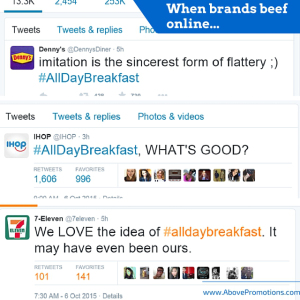 If your company is serious about creating an online presence, there’s more to it than just putting up blog posts or social updates and then just forgetting they ever exist. You want to find a way to figure out if all your efforts are paying off. For a lot of organizations, the list of metrics they keep track of starts and ends with pageviews. Hits are worth keeping track of, but here are three more metrics that will help your company get a better view of the total picture.
If your company is serious about creating an online presence, there’s more to it than just putting up blog posts or social updates and then just forgetting they ever exist. You want to find a way to figure out if all your efforts are paying off. For a lot of organizations, the list of metrics they keep track of starts and ends with pageviews. Hits are worth keeping track of, but here are three more metrics that will help your company get a better view of the total picture.
1. Unique Visitors
Unique visitors are the close relatives of page views and they’re actually what a lot of people have in mind when they see the page view number. 250,000 page views probably doesn’t mean a quarter of a million people visited your site – the unique visitor number is what you’re looking for if you’re interested in a headcount.
The number of unique people showing up at your site is important because it’s one of the best ways to determine how well the marketing efforts aimed at driving traffic to your site are actually working. While a handful of visitors clicking through a large number of pages on your site is probably great news for your sales team, if you’re spending money on paid search, boosting social posts, or sending out e-mails to your lists, you want to see a high number of unique visitors swinging by your page.
2. Traffic Sources
If you’re spending money in any of those areas, you’ll want to know more than just how many people are finding their way to your website, you’ll want to know where they’re coming from. Don’t rely on the reporting of the places you’re advertising with. It’s important to have a way to track referrals and determine where your visitors found you. It’s not just important for paid avenues either – keeping an eye on your traffic sources is a great way to find out how well your organic efforts are working and where you can improve.
3. Conversion Rates
Of course, all your page views and unique visitors are useless if they don’t eventually get converted to sales. Conversion rates help you determine which parts of your website are working most effectively and how efficiently you are turning visitors into sales. There’s more to conversion rates than just a simple “visitors divided by sales” equation – every page on your site that asks visitors to take an action has its own conversion rate. How many of the people who find their way to your “contact us” page actually reach out? Which calls to action are creating contacts for you and which are underperforming? Conversion rates help you determine what direction you should take new content for your site in moving forward.
These are just three of the metrics your company should take a look at when evaluating your site. Obviously, there are a ton more out there, and there are some that might be very important for your specific industry, website, or ideal customer.
Business Articles | Business 2 Community
(383)
Report Post









